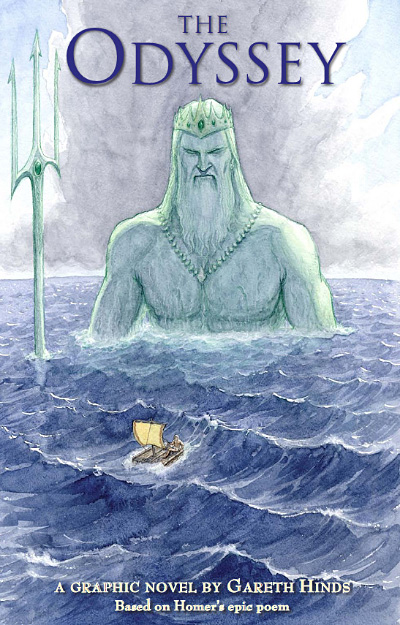Flora and Ulysses: The Illuminated Adventures by Kate DiCamillo

Bibliography
DiCamillo, Kate. Flora and Ulysses: The Illuminated Adventures. Candlewick Press, 2013.
ISBN: 978-0763660406
Plot
Flora, a precocious and cynical 10 year old girl, rescues a squirrel from a ferocious outdoor vacuum cleaner. Named Ulysses after the vacuum cleaner that sucked it up, the squirrel has unusual superpowers, or so Flora believes. After successfully sneaking Ulysses into the house, unawares of her flighty Mother, Flora begins to learn what superpowers the squirrel has acquired. After proving his intelligence and bravery, Ulysses suddenly goes missing, throwing Flora into a search for him before he dies at the hand of his nemesis. Joining Flora are William Spiver, Dr. Meescham, Tootie, and George Buckman for an adventure that will show Flora what really matters in a not-so-terrible world. Along the way, she makes new friends and learns an important fact about her parents.
Critical Analysis
The story of Flora and Ulysses by Kate DiCamillo invokes laughter and tears, with antics and drama aplenty. The plot begins in a normal world, with a cynical little girl whose parents have gone through divorce. The sudden spark of intrigue begins with the first pages, where a short prelude introduces the reader to a large vacuum cleaner. When a squirrel gets sucked up and obtains magical powers, the reader is drawn into a plot which centers on a budding friendship and the discovery of these simple, but profound powers. Ulysses as a character is credible, even in the fantastical moments when he is surprising the humans with unusual abilities. He is demonstrated to be kind and philosophical, as well as brave and lighthearted. DiCamillo succeeds in bringing to life a realistic squirrel, with thoughts that are authentic to the character. Flora as well is a multidimensional character, with feelings beyond her self described cynical thoughts. She is determined and full of faith in a sense of adventure and the unbelievable. Flora and Ulysses presents many characters which are developed, from William Spiver to Flora's Father.
The theme of love conquering all prevails in the plot. Although there is a touch of villain present in a few of the characters, in the end it is love which saves the day. Flora finds through her adventures that her parents, although divorced, both love her tremendously, and are willing to sacrifice their own desires for her. Throughout the book, moments of tenderness between Flora and her individual parents are present and assist in promoting the budding friendships between William Spiver, Flora, and Ulysses.
Vivid details abound in the setting, and are promoted through cartoon illustrations which are whimsical. The poetry in the story will stay with readers as it ties together the short chapters in the story. A delightful romp through a succinct plot line that shows that family really matters, even if isn't always perfect.
Excerpts of Reviews
"Campbell's rounded and gentle soft-penciled illustrations, at times in the form of panel art furthering the action, wonderfully match and add to the sweetness of this oddball story. Rife with marvelously rich vocabulary reminiscent of the early superhero era (e.g., “Holy unanticipated occurrences!”) and amusing glimpses at the world from the point of view of Ulysses the supersquirrel, this book will appeal to a broad audience of sophisticated readers."
School Library Journal
"In "Flora and Ulysses," longtime fans will find a happy marriage of Mercy Watson's warmth and wackiness and Edward Tulane's gentle life lessons. In Flora, they will find a girl worth knowing, and one they will remember."
New York Times
"This is a fun and clever tale of an unlikely hero uniting an even more unlikely cast of characters. Kate DiCamillo strikes again. Each character is well-drawn, the story is packed with fun references and asides. It's a perfect blend of poignancy and magic."
Parents Choice Book Awards
1. Discuss how Flora and William Spiver became friends. Hold a conversation on how to become friends and be a friend. Read other books about unlikely friendships, such as:
A Sick Day for Amos McGee by Philip C. Stead
Charlotte's Web by E. B. White
Jane, the Fox & Me By Fanny Britt
2. Re-read Ulysses poetry and have students create their own poetry with a message.
3. Have students create their own comic strips, as K.G. Campbell does in the story.
4. Read more stories by Kate DiCamillo, such as:
The Miraculous Journey of Edward Tulane
The Magician's Elephant
The Tale of Despereaux
Tiger Rising
A Sick Day for Amos McGee by Philip C. Stead
Charlotte's Web by E. B. White
Jane, the Fox & Me By Fanny Britt
2. Re-read Ulysses poetry and have students create their own poetry with a message.
3. Have students create their own comic strips, as K.G. Campbell does in the story.
4. Read more stories by Kate DiCamillo, such as:
The Miraculous Journey of Edward Tulane
The Magician's Elephant
The Tale of Despereaux
Tiger Rising




